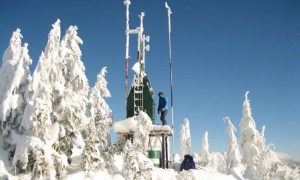
Nasa Study Finds Global Warming Underestimated By Nearly 20%
A new NASA-led study finds that almost one-fifth of the global warming that has occurred in the past 150 years has been missed by historical records due to quirks in how global temperatures were recorded. The study explains why projections of future climate based solely on historical records estimate lower rates of warming than predictions from climate models.
The study conducted by a team headed by Mark Richardson of NASA’s Jet Propulsion Laboratory, Pasadena, California, suggests that global warming projections based on historical data may go wrong because of the quirks in the recorded data.
The scientists applied the quirks in the historical records to climate model output and then performed the same calculations on both the models and the observations to make the first true apples-to-apples comparison of warming rates. They found that both the results were almost equal to the expected global warming for upcoming years.
A clear example of the peculiarity of temperature recording is that of the Arctic which is warming at a higher rate than the rest of the world. But, due to the inaccessible nature of the Arctic, fewer historic temperature rates from the region were recorded in the past compared to lower altitude areas. As a result of this, the combined data shows a lower rate of global warming compared to a climate model that fully represents the Arctic.
The new study also accounted for two other issues. First, the historical data mix air and water temperatures, whereas model results refer to air temperatures only. This quirk also skews the historical record toward the cool side, because water warms less than air. The final issue is that there was considerably more Arctic sea ice when temperature records began in the 1860s, and early observers recorded air temperatures over nearby land areas for the sea-ice-covered regions. As the ice melted, later observers switched to water temperatures instead. That also pushed down the reported temperature change.
Mark Richardson said that the scientists have known about the quirks for some time. “They’re quite small on their own, but they add up in the same direction. We were surprised that they added up to such a big effect,” he said.
These quirks in the historical recording have hidden almost 19 percent of the global warming since the 1860s. This is the reason for the estimates made from the historical records showing cooler temperature than the results from the climate models that the Intergovernmental Panel on Climate Change (IPCC) uses.
“Researchers should be clear about how they use temperature records, to make sure that comparisons are fair. It had seemed like real-world data hinted that future global warming would be a bit less than models said. This mostly disappears in a fair comparison,” said Richardson.
Watch Video: NASA Sees Temperatures Rise and Sea Ice Shrink – Climate Trends 2016
The study is published in the journal Nature Climate Change.